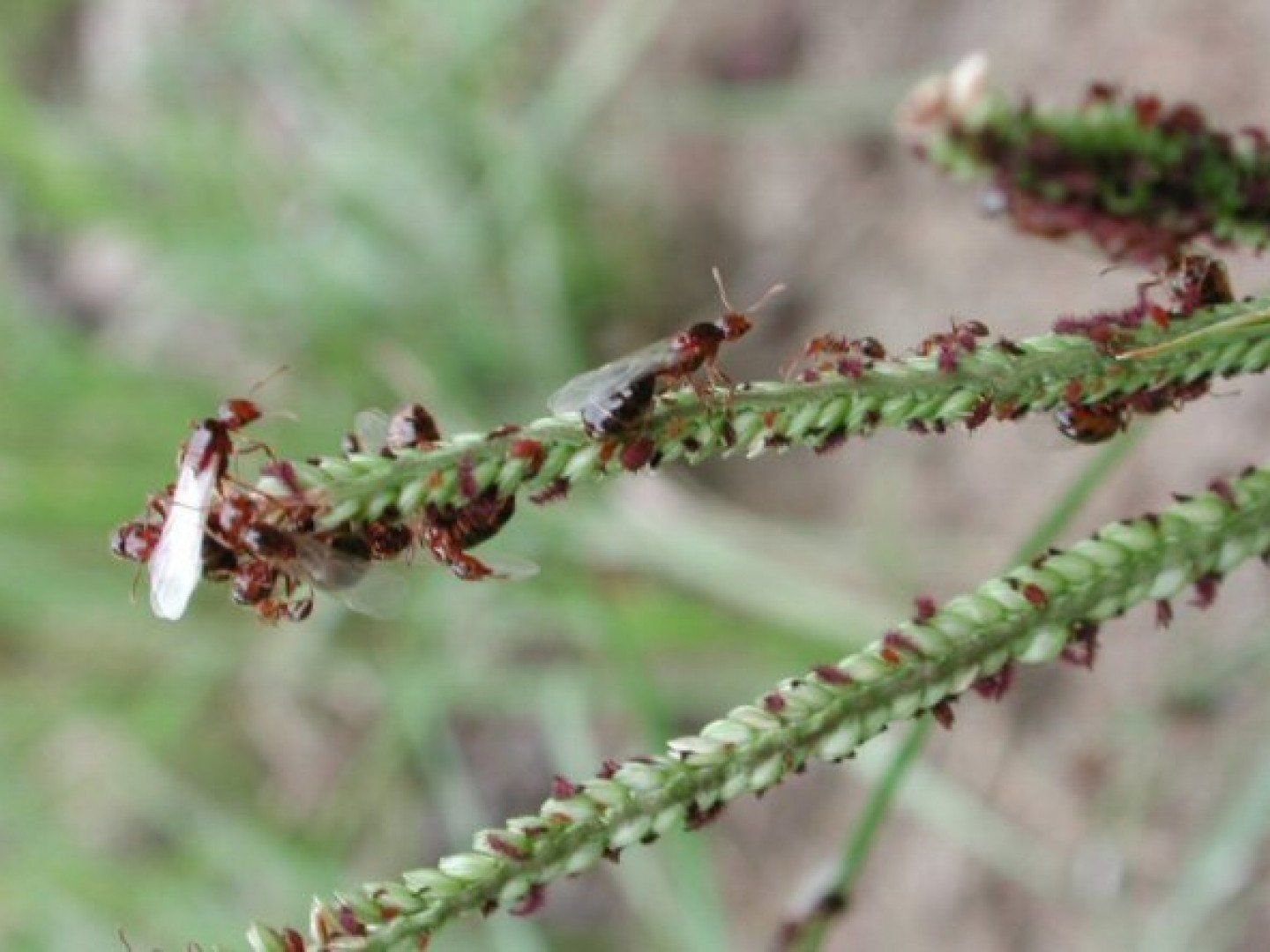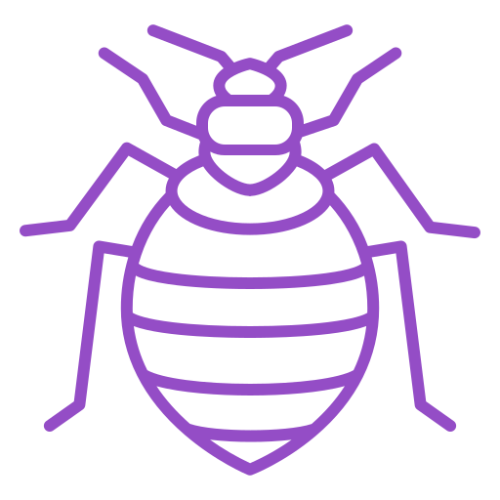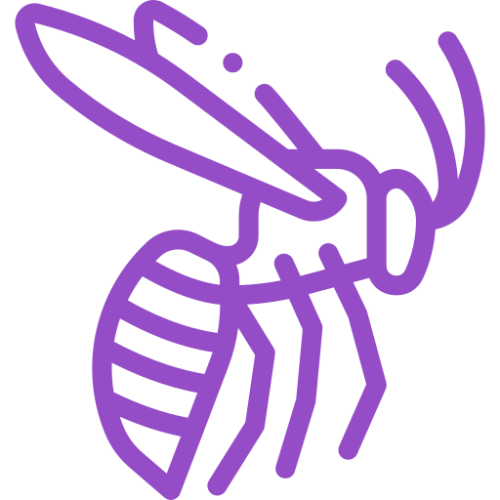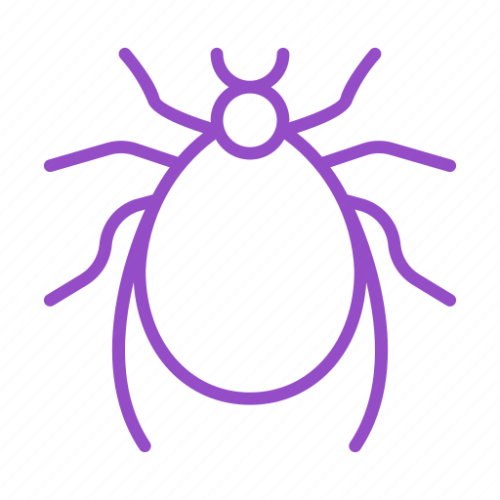Ant Control and Exterminator Service
The Best Ant Exterminator And Ant Control Services Near Me!
Good news! SmartGreen Pest and Mosquito Control uses reduced risk materials which are just as effective but less toxic than our competitors. Our most popular yard service is for the reduction of Red Imported Fire Ants. Red Imported Fire Ants are a harmful pest, to say the least. Most Fire Ants are found in the Southern United States. Fire Ants are very adaptable and can be very harmful to you, loved ones, including pets and your lawn. Fire Ants love to colonize in turf areas. If you disturb a Fire Ant mound, Fire Ants will quickly mobilize and sting in mass.
Call (404) 937-7088 today schedule today with SmartGreen Pest and Mosquito Control for ant control services in Kennesaw & Atlanta, GA.
We Provide Ant Control and The Following Services:
SmartGreen Pest and Mosquito Control is dedicated to exterminating and preventing pest infestations on your property. Our services eradicate the most common and even uncommon pest types. You can count on us for:
Trust SmartGreen Pest and Mosquito Control exterminators in Woodstock, Kennesaw, GA and surrounding areas to get rid of all types of insects around your property. Call (404) 937-7088 today to request eco friendly pest control at your home or office.
Understanding Ant Behavior: The First Step to Effective Ant Control
Ants are fascinating creatures that live in highly organized colonies. To effectively control ants, it is essential to understand their behavior and biology. This section will delve into the various aspects of ant behavior, providing you with valuable insights to tackle ant infestations more effectively.
Social Structure of Ant Colonies
Ant colonies consist of different types of ants, each with specific roles and responsibilities. Understanding the social structure of ant colonies can help in devising targeted control strategies. We will explore the following key roles within an ant colony:
- Queen: The queen is the reproductive member of the colony and is responsible for laying eggs to sustain the colony's population.
- Workers: The majority of ants in a colony are workers. They perform various tasks such as foraging for food, caring for the queen and her offspring, and maintaining the nest.
- Soldiers: Some ant species have specialized soldiers that defend the colony against threats.
Ant Communication and Trail Formation
Ants communicate with each other through chemical signals known as pheromones. These pheromones help ants in several ways, including marking trails to food sources and alerting others to potential dangers. Understanding how ant communication works and how trails are formed can assist in disrupting their foraging patterns.
Foraging Behavior and Food Preferences
Ants are constantly in search of food sources, and understanding their foraging behavior can help in preventing infestations. We will discuss the following aspects:
- Preferred food sources: Different ant species have varying preferences for food. Knowing what attracts ants can help in implementing preventive measures.
- Foraging patterns: Ants establish foraging trails between their nest and food sources. Understanding their patterns can guide in disrupting these trails and deterring ants from entering your home.
Nesting Habits and Locations
Ants create nests in various locations, both indoors and outdoors. Understanding their nesting habits can assist in identifying potential entry points and implementing targeted control measures. We will explore common nesting locations, such as:
- Outdoors: Ants may nest in soil, under rocks, in tree stumps, or in decaying wood.
- Indoors: Ants can establish nests in wall voids, under floorboards, in attics, or even in electrical equipment.
By gaining a deeper understanding of ant behavior, you will be better equipped to tackle ant infestations effectively. In the next section, we will focus on identifying different types of ants, which is crucial for implementing appropriate control methods.
Identifying Different Types of Ants
Ants come in a wide variety of species, each with its own unique characteristics and behaviors. Properly identifying the type of ants infesting your space is essential for implementing the most effective control methods. In this section, we will explore the importance of ant identification and discuss some common types of household ants. Additionally, we will learn how to identify ant trails, which can provide valuable insights into their foraging patterns.
Understanding the Importance of Ant Identification
Identifying the specific species of ants infesting your home is crucial because different ants may require different control methods. Some ants may be attracted to sweets, while others are more drawn to proteins or fats. By accurately identifying the ants, you can target their preferences and effectively eliminate them from your environment.
Common Types of Household Ants
- Carpenter Ants: These large ants are known for their ability to damage wood. They excavate tunnels in wooden structures, potentially causing significant structural damage over time.
- Odorous House Ants: These ants emit a strong, unpleasant odor when crushed, often compared to the smell of rotten coconut. They are attracted to sweet substances and can quickly establish large colonies indoors.
- Pavement Ants: These small brown or black ants are commonly found nesting under sidewalks, driveways, and foundations. They are attracted to a variety of foods and can invade homes in search of sustenance.
- Pharaoh Ants: These tiny yellow or light brown ants are notorious for their ability to establish large colonies quickly. They are attracted to sweet and greasy foods and are commonly found in kitchens and bathrooms.
- Argentine Ants: These light to dark brown ants form extensive colonies and are known for their strong trailing behavior. They are attracted to sweets and are often found in kitchens and pantries.
- Fire Ants: Reddish-brown or black in color, fire ants are known for their painful stings. They build large mounds in outdoor areas and can be aggressive if their nests are disturbed.
Identifying Ant Trails
Ant trails are the pathways that ants use to travel between their nest and food sources. Identifying these trails can help you determine where the ants are coming from and where they are headed. By disrupting these trails, you can interrupt their foraging patterns and prevent them from accessing your home.
Understanding the different types of ants commonly found in households and learning how to identify their trails will enable you to implement targeted control measures. In the next section, we will discuss preventive measures that can help in keeping ants at bay.
Preventive Measures for Ant Control
Preventing ant infestations is an essential step in maintaining a pest-free home. By implementing preventive measures, you can minimize the chances of ants entering your living spaces and reduce the need for extensive control methods. In this section, we will discuss effective preventive measures that can help in keeping ants at bay.
Keeping a Clean House
Maintaining cleanliness is crucial in preventing ant infestations. Here are some key practices to follow:
- Regular cleaning: Sweep and mop floors regularly to eliminate food crumbs and spills that may attract ants. Pay extra attention to kitchen areas where food is prepared and consumed.
- Proper food storage: Store food in airtight containers to prevent ants from accessing it. Keep ripe fruits and sweet treats in the refrigerator, and promptly clean up any spills or crumbs.
- Take out the trash: Dispose of garbage in sealed bags and take it out regularly to avoid attracting ants. Clean out trash cans regularly to remove any food residue.
Sealing Entry Points
Ants can enter your home through tiny cracks and openings. By sealing these entry points, you can create a barrier that prevents ants from gaining access. Consider the following steps:
- Seal gaps and cracks: Inspect your home for any gaps or cracks in walls, windows, doors, and foundation. Seal them using caulk or weatherstripping to block potential entryways for ants.
- Screen windows and doors: Install screens on windows and doors to prevent ants from entering while allowing fresh air to circulate.
- Address plumbing leaks: Fix any leaks in pipes or faucets, as ants are attracted to moisture. Ensure that sinks and drains are properly sealed.
Landscape Maintenance for Ant Prevention
Ants can also establish nests in outdoor areas and eventually find their way indoors. By implementing proper landscape maintenance practices, you can reduce the likelihood of ant infestations. Consider the following:
- Trim vegetation: Keep shrubs, bushes, and trees trimmed and away from your home's exterior. This reduces the chances of ants using them as bridges to reach your house.
- Remove debris: Clear away leaf piles, fallen branches, and other debris from your yard. These can provide hiding places and nesting sites for ants.
- Manage moisture: Ensure proper drainage in your yard to prevent water accumulation, as ants are attracted to moist environments.
By implementing these preventive measures, you can significantly reduce the risk of ant infestations in your home. In the next section, we will explore effective ant control methods, including both do-it-yourself solutions and professional pest control services.
Effective Ant Control Methods
When it comes to effectively controlling ants, there are various methods you can employ. In this section, we will explore different approaches to ant control, including do-it-yourself solutions and professional pest control services. By understanding these methods, you can choose the most suitable approach based on the severity of the infestation and your personal preferences.
DIY Ant Control Solutions
If you prefer a hands-on approach and want to tackle ant infestations on your own, there are several do-it-yourself solutions you can try. Here are some effective methods:
- Natural remedies: Certain natural ingredients and substances can help repel ants. Examples include essential oils like peppermint, lemon, or tea tree oil, as well as vinegar and cinnamon. These can be used as sprays or placed strategically to deter ants.
- Homemade ant baits: Create your own ant bait using a combination of sugar or honey mixed with a small amount of borax or boric acid. Place these baits near ant trails or areas where ants are commonly seen. The worker ants will carry the bait back to the colony, effectively eliminating the entire colony.
- Physical barriers: Create barriers using substances ants find difficult to cross, such as diatomaceous earth, baby powder, or chalk lines. These barriers can disrupt ant trails and prevent them from entering your living spaces.
Using Ant Baits
Ant baits are highly effective in controlling ant infestations, as they target the entire ant colony. These baits typically contain a slow-acting poison that is attractive to ants. The workers consume the bait and carry it back to the nest, where it is shared with the rest of the colony, including the queen. This method ensures the elimination of the entire colony. When using ant baits, keep the following tips in mind:
- Selecting the right bait: Different ant species may be attracted to different types of bait. Choose baits that are specifically formulated for the type of ants you are dealing with.
- Proper placement: Place the bait stations near ant trails or areas where ants are commonly seen. Avoid using insecticides or cleaning agents near the bait, as this can deter ants from taking the bait.
- Patience: Ant baits may take some time to be effective, as it can take several days or even weeks for the poison to reach the queen and eliminate the colony. Be patient and avoid disrupting the bait stations during this period.
Hiring a Professional Pest Control Service
If the infestation is severe or if your efforts with DIY methods have been unsuccessful, it may be time to consider hiring a professional pest control service. Pest control professionals have the knowledge, experience, and specialized tools to effectively deal with ant infestations. Here are some benefits of hiring a professional:
- Accurate identification: Professionals can accurately identify the ant species and tailor their control methods accordingly.
- Integrated Pest Management (IPM): Pest control services often use IPM techniques, which focus on long-term prevention and environmental sustainability. They may combine various methods, including baits, sprays, and physical barriers, to achieve effective results.
- Expertise and safety: Professional pest control technicians are trained to handle pesticides safely. They know how to apply treatments without posing risks to humans, pets, and the environment.
By considering these different ant control methods, you can choose the approach that best suits your needs and effectively eliminate ant infestations. In the next section, we will discuss how to maintain an ant-free home once you have implemented control measures.
Maintaining an Ant-Free Home
Once you have successfully controlled ants and eliminated infestations from your home, it is crucial to maintain an ant-free environment to prevent future problems. This section will provide you with essential tips and practices to help you sustain an ant-free home in the long term.
Regular Home Inspections
Perform regular inspections to identify any signs of ant activity or potential entry points. By staying vigilant, you can catch early signs of infestations and take prompt action. Here are some inspection tips:
- Check entry points: Inspect doors, windows, and foundation for any gaps or cracks that ants can use to enter your home. Seal them promptly to prevent ant access.
- Monitor potential nesting areas: Keep an eye on areas where ants commonly nest, such as wall voids, attics, and crawl spaces. Detecting early signs of ant activity in these areas can help you address the issue before it becomes a full-blown infestation.
- Observe foraging patterns: Pay attention to any new ant trails or increased ant activity in your home or yard. This can indicate the presence of a nearby nest or a potential food source that is attracting ants.
Continuous Sanitation Practices
Maintaining cleanliness and proper sanitation is essential in deterring ants from infesting your home. Here are some sanitation practices to follow:
- Clean up spills and crumbs: Wipe up any spills and promptly clean food crumbs from countertops, tables, and floors. Regularly vacuum carpets and sweep floors to remove food debris that may attract ants.
- Store food properly: Keep food stored in airtight containers to prevent ants from accessing it. Pay special attention to pantry items, pet food, and fruits that are left out.
- Dispose of garbage properly: Seal trash bags tightly and take out the garbage regularly. Empty and clean trash cans to remove any food residue that may attract ants.
Staying Vigilant for New Ant Infestations
Even with preventive measures in place, it is important to remain vigilant for any signs of new ant infestations. Ants can be persistent, and occasional re-infestations can occur. Here are some tips to stay proactive:
- Monitor ant activity: Keep an eye out for any new ant trails or increased ant activity in and around your home. Early detection can help you address the issue before it becomes a major infestation.
- Maintain preventive measures: Continually implement preventive practices, such as sealing entry points and practicing good sanitation, to minimize the chances of ants returning.
- Seek professional help if needed: If you notice a recurring or severe ant infestation despite your best efforts, consider seeking the assistance of a professional pest control service. They can provide targeted treatments and help you address the underlying causes of the infestation.
By consistently practicing good sanitation, conducting regular inspections, and staying vigilant, you can maintain an ant-free home and minimize the risk of future infestations.
Congratulations! You have now completed our comprehensive guide to ant control. Armed with the knowledge and strategies provided, you are well-equipped to tackle ant infestations, identify different types of ants, implement preventive measures, utilize effective control methods, and maintain an ant-free environment. Remember, prevention and early intervention are key to successfully managing ants and enjoying a pest-free home.
Smartgreen Yard Services:
- We offer a quarterly service which we typically perform along with your quarterly pest control service.
- We also offer a one-time service.







